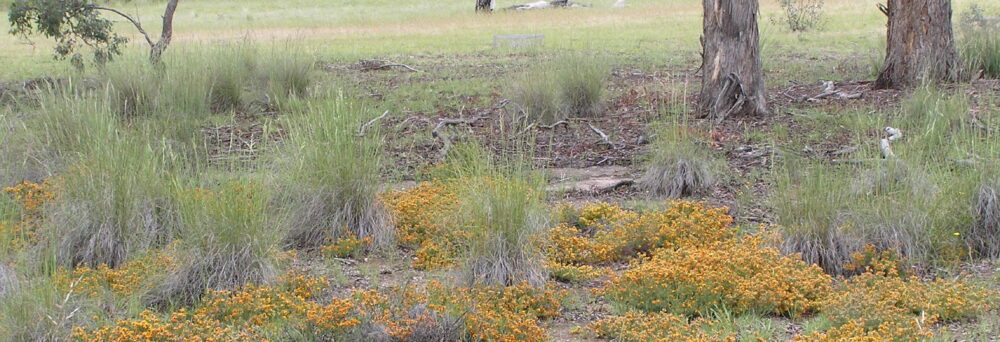In early 2022 we published long-term observations on the many species of Wallaby Grass that are growing on Gang Gang.
We identified their different habitats and how their relative abundance has changed over the last 15 years.
The paper is available free through this link: wallaby grass paper
A short summary of the paper is provided below:
Meet the neighbours
Whether you run livestock or are mainly interested in biodiversity, Wallaby Grasses are a significant part of our vegetated landscape. They belong to an intriguing and enigmatic genus Rytidosperma. The species are difficult to identify, owing to the obscure microscopic features that separate them, their tendency to hybridize, and a tendency to pass on more than the normal single set of chromosomes into the next generation.
On Gang Gang we have been monitoring the Wallaby Grasses for 15 years and have finally analysed and written up our observations. The work has involved the microscopic examination of 1,959 seed heads, enabling us to identify 12 different species in a 50 hectare paddock. This is around two-thirds of the 17 species that are found around the Southern Tablelands – not including the three species that are restricted to the alpine areas.
Each species has its own ecological niche, which botanists are only beginning to understand. But this understanding is important for conservation. Some species feed the threatened Golden Sun Moth, another protects orchids. As pasture plants, some are highly productive, others hold eroding soil together.
 Above: Red-anther Wallaby Grass – Rytidosperma pallidum
Above: Red-anther Wallaby Grass – Rytidosperma pallidum
Each of the seventeen species of Wallaby Grass that occur on the Southern Tablelands can be recognized by the unique pattern of hairs and bristles that ornament their seed coverings. While each has its own ecological features, their habitats overlap and as many as five species can be found in an area the size of a ping-pong table.
The ecological niches of the species are indicated by their position on the triangle. Their importance in native and natural pastures is largely due to their tolerance of a range of fertilities (soil productivity) and grazing pressures (disturbance). They can persist where sown species do not. Some species thrive on the poorest of soils, but none tolerate the extremes of disturbance or fertility.


